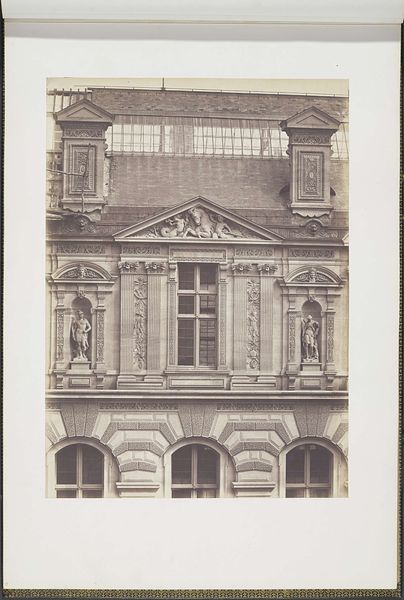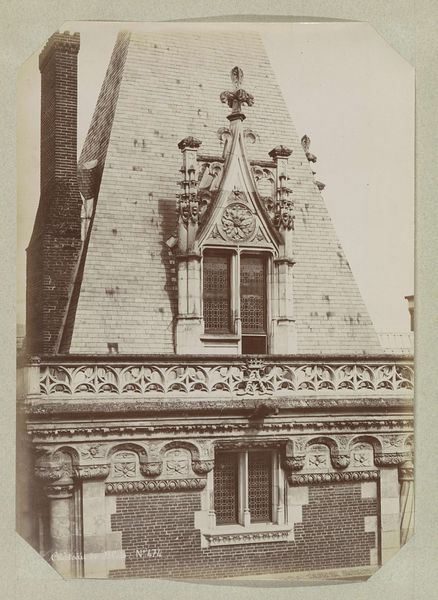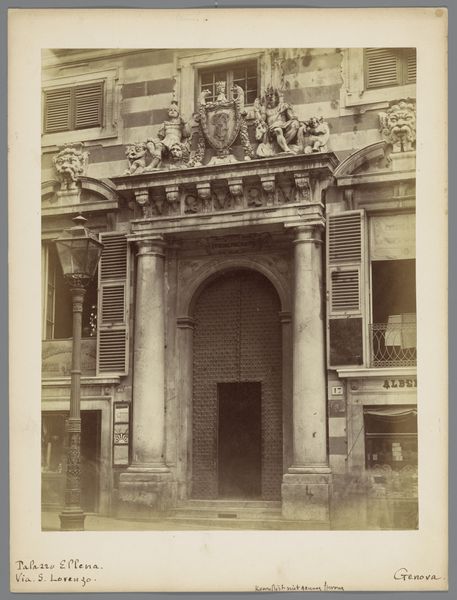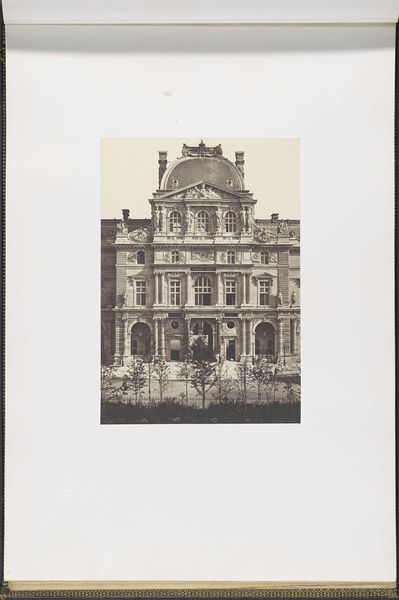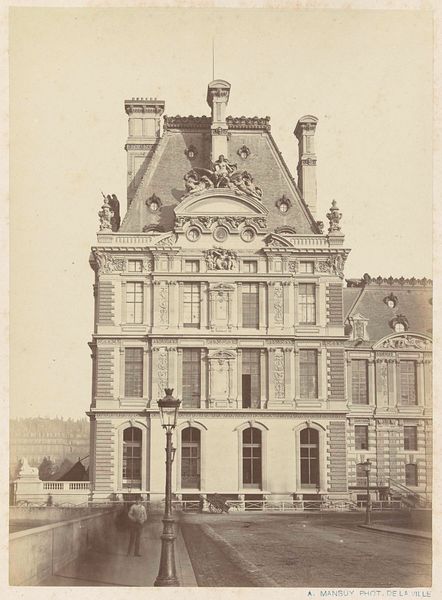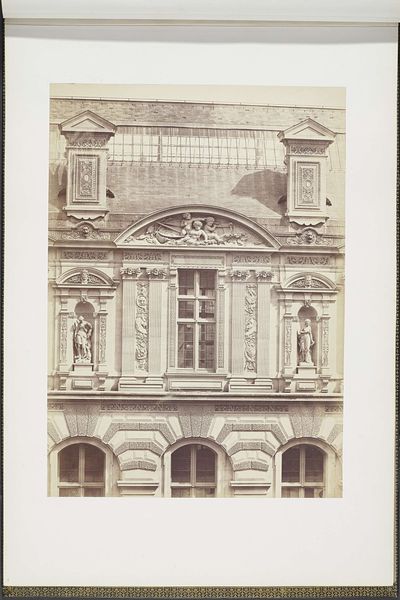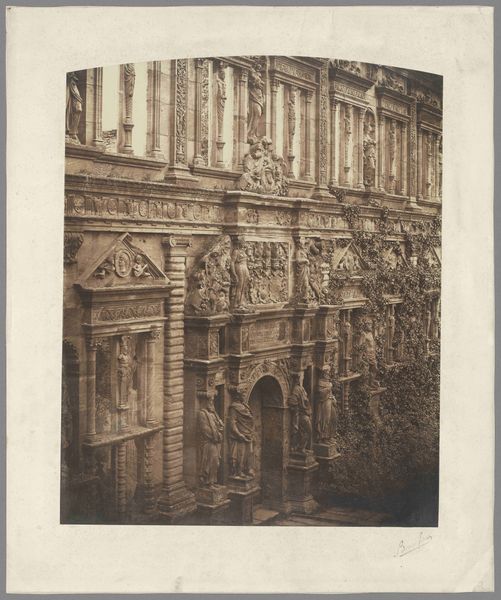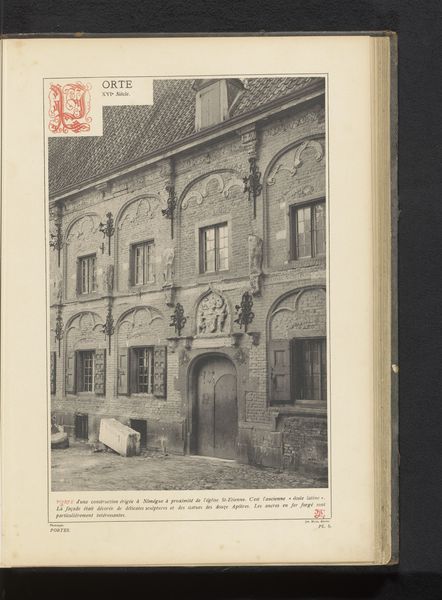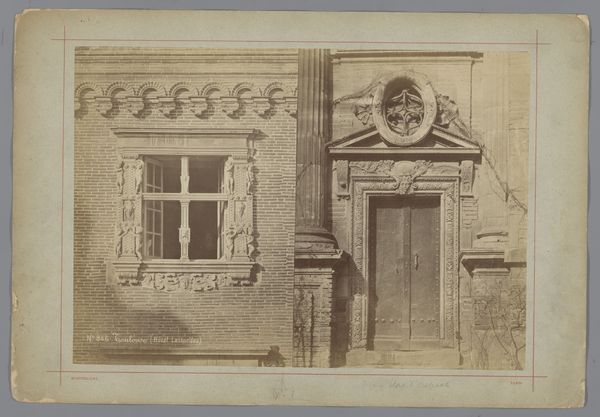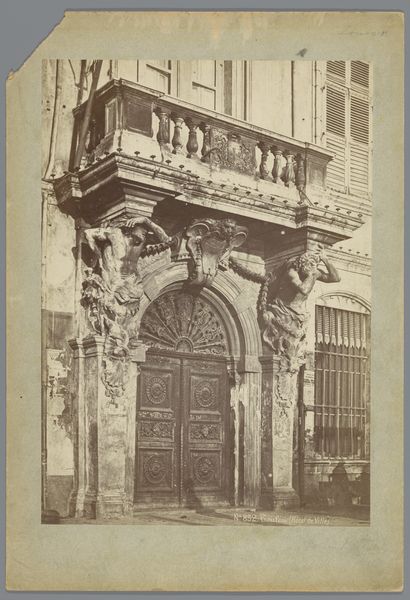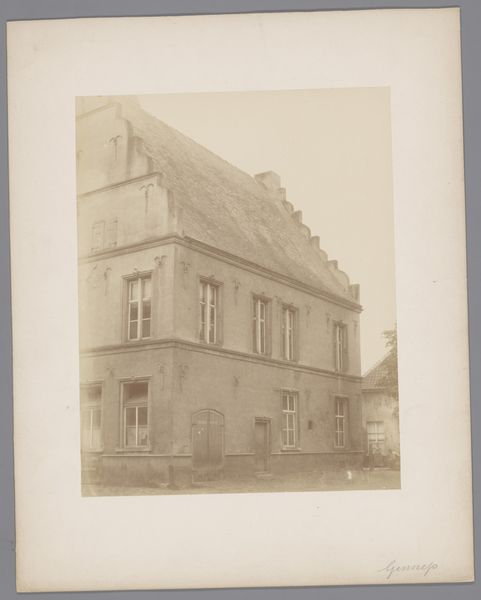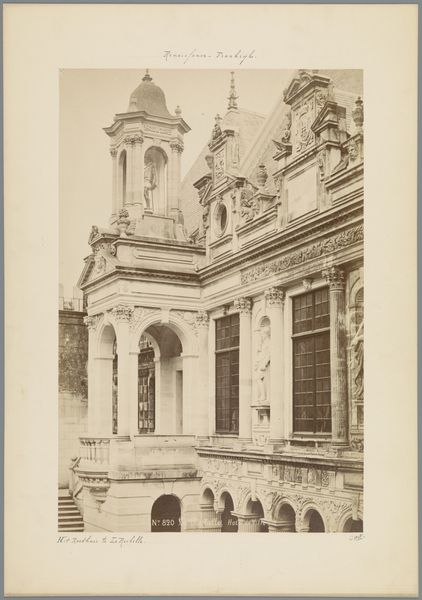
Dakvensters van het Kasteel van Blois geornamenteerd met een fronton en een nis met daarin een sculptuur van een jongen c. 1875 - 1900
0:00
0:00
medericmieusement
Rijksmuseum
photography, architecture
#
portrait
#
photography
#
19th century
#
architecture
Dimensions: height 359 mm, width 249 mm
Copyright: Rijks Museum: Open Domain
Editor: This is a photograph, dating from between 1875 and 1900, by Médéric Mieusement, titled "Dakvensters van het Kasteel van Blois geornamenteerd met een fronton en een nis met daarin een sculptuur van een jongen." It’s currently housed in the Rijksmuseum. The level of detail is striking – I am especially drawn to the intricate carvings above the windows. What strikes you about this photograph? Curator: Initially, my eye is drawn to the architectural composition. The interplay between the strong horizontal lines of the windowsills and the vertical thrust of the engaged columns creates a fascinating visual rhythm. Consider the use of light; the way it articulates the texture of the stone, adding depth and dimensionality to what could easily be a flat image. Do you notice how the sculptures serve as focal points, punctuating the architectural narrative? Editor: I do. It's as if they break the architectural lines – almost a disruption of the established pattern. Do you think that the intention was to emphasize a kind of Renaissance ideal through their sculptural qualities? Curator: Perhaps. However, if we consider the framing and composition choices, we find an engagement that speaks more clearly. The photographer has selected this very fragment of the façade. Observe the interplay of planes and geometric shapes— the triangles in the fronton mirrored, echoed in the mullioned windows below. Do these self-referential structures create a dialogue? Editor: That's fascinating. It’s almost like a self-contained world, emphasizing the intrinsic order of the architectural forms. Looking again, I see now how the repetition emphasizes structure above all. Curator: Precisely. By focusing on the relationships between forms, lines, and light, we are able to grasp a deeper appreciation of its design elements, irrespective of historical intent. Editor: This has opened my eyes to appreciate the photographer’s intent on showcasing intrinsic, aesthetic values in an image of architecture. Curator: And that is what close observation is for, isn’t it?
Comments
No comments
Be the first to comment and join the conversation on the ultimate creative platform.
